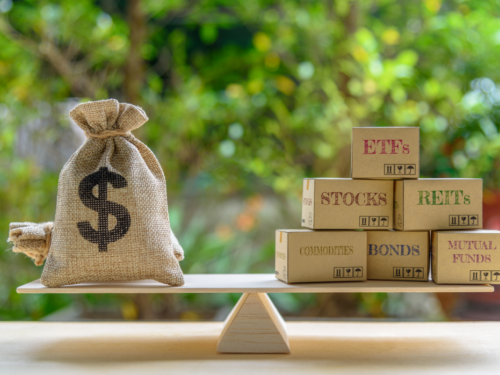
The S&P 500 recorded its best August return since 1986, up +7%. The S&P5, the so called FAAMG stocks, provided a majority of the S&P return for the month[i]. Developed market stocks, excluding the U.S., as measured by the MSCI EAFE Index, rose 4.9% and the MSCI Emerging Markets Index gained 2.1%[ii]. Domestic fixed income measured by the Bloomberg Barclays Aggregate, was down -0.8%[iii]. The trade-weighted U.S. dollar index continued its decline, falling an additional -1.3% in August[iv].
As we have pointed out in previous letters, stock market valuation had already reached lofty levels as measured by overall stock market capitalization versus the size of the economy (market cap/GDP). In July, we reached 171%, eclipsing the level of the Dotcom boom in March of 2000, and it has continued to grow to 178% as of this writing[v]. A perhaps more relatable valuation metric has also reached record highs: The forward price to earnings multiple on the S&P 500 is above 26, the same level reached in March 2000. March 2000 was also the peak of the market[vi].

We have vivid recollections of the Dotcom boom and the following bust from 1999 to 2002. Strangely enough, we are currently seeing many other similarities to that era 20 years ago. In addition to comparable record market valuations as illustrated to the right, we have talked at length about the lack of breadth in the market, that a very few number of stocks are providing most of the returns for the indices. This also occurred during the Dotcom bubble. Twenty years ago it was, similar to today, technology providing the majority of the returns.
Additional events in August remind us of that era 20 years ago. During the Dotcom boom, companies would add “.com” to their name to significantly boost their stock return and participate in the bubble. Yes, it really happened and we lived through it. Three professors from the University of Purdue published a study, “A Rose.com by Any Other Name” in the December 2001 issue of The Journal of Finance, that showed company managements could increase their stock price by about 74% in the 10 days after announcing that they were adding “.com” to their name! Imagine our sense of déjà vu when Walmart announced on August 27 that it was teaming up with Microsoft to bid for TikTok, a social media platform. Walmart stock gained +4.5% on this announcement. Less than one week later on September 1, Walmart gained an additional +6% as it announced it will launch a membership program similar to Amazon Prime later in the month[vii]. Walmart has traditionally been viewed as an old-school brick and mortar retailer. It appears they are trying to change that perception.
Another phenomenon during the Dotcom bubble was to split your stock into more shares, which in many cases helped to drive the price higher. Apple announced a 4-for-1 stock split on 7/30/2020. Tesla announced a 5-for-1 stock split on 8/11/2020. From the announcement of each stock split to August 31, Apple gained +34% and Tesla gained +81%[viii]. These high gains were in spite of the fact that a stock split simply lowers the price for a share of the company’s stock. A split does not add any economic value to the underlying company and investors can already buy fractional shares through many trading platforms. Ask yourself the following question: Would you like your pizza cut into 8 slices or 16? No matter how many slices you decide to cut the pizza into, you still have the same total amount. If non-value-additive stock splits and acquiring social media properties like TikTok juice your stock price, more company managements may likely be considering doing the same, but we would not rely on that as an investment strategy.
Just a couple of other similarities:
- The market has appreciated about 80% while normalized earnings have flat lined for four years. Going in to 2000, the same thing happened when the spread blew out to 70%[ix].
- The valuation gap between high valuation stocks (29x earnings) and low valuation stocks (10x earnings) remains wide and similar to 2000[x].
- The number of stocks trading over 10x revenues in the Russell 3000 is more than 400, like the year 2000. That means for a 10-year payback, the company needs to pay investors 100% of revenues for 10 straight years in dividends regardless of the cost of goods sold, payroll, taxes, etc[xi].
Where do we go from here? As of August 31, 20 of 22 prominent Wall Street strategists have a year-end 2020 price target for the S&P 500 at or below the closing price of the index[xii]. Valuations did not matter during the Dotcom bubble of 1999 – 2000 until suddenly they did, after Labor Day 2000. Then the narratives about the market and specific “darling” stocks that everyone believed that everyone believed broke. It took two years for the market to reach bottom after the bubble burst. The S&P 500 lost 50% and the NASDAQ lost 78% from the March 2000 peak to the October 2002 low[xiii].
To paraphrase the great Yogi Berra, it’s tough to make
predictions, especially about the future – of what very well may be the largest
financial bubble of all times. That said, market conditions are likely continue
to be volatile for some time. Volatility usually means that we are nearing an
inflection point. We feel strongly that having our safety nets up, bracing for some potential steep air-pockets,
and refraining from speculation in the hyper-valued growth stocks that we are
seeing like Apple and Tesla, is the correct way to be positioned as we wait for
the inflection to present new opportunities. Historically, outsized returns in out-of-favor
areas can appear swiftly and dramatically. If such a move occurs from growth to
areas such as value, dividends and small caps, we are already invested there.
At the same time, we have a plan if the markets and the economy do get better,
likely leading to the bubble marching on.
[i] Calculated from data obtained from Yahoo Finance, as of August 31, 2020
[ii] MSCI, as of August 31, 2020
[iii] Calculated from data obtained from Bloomberg, as of August 31, 2020
[iv] Calculated from data obtained from Yahoo Finance, as of August 31, 2020
[v] https://www.gurufocus.com/stock-market-valuations.php as of September 14, 2020
[vi] Factset, September 1, 2020
[vii] Calculated from data obtained from Yahoo Finance, as of September 3, 2020
[viii] Calculated from data obtained from Yahoo Finance, as of August 31, 2020
[ix] Bloomberg Data from 01/01/1990 to 7/31/2020 via Invenomic Capital
[x] Goldman Sachs Investment Research. Data from 01/01/1985 to 6/25/2020
[xi] Bloomberg Data from 01/01/1997 to 07/31/2020 via Invenomic Capital
[xii] Bloomberg, as of August 31, 2020
[xiii] Calculated from data obtained from Yahoo Finance, as of August 31, 2020


